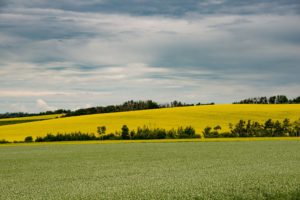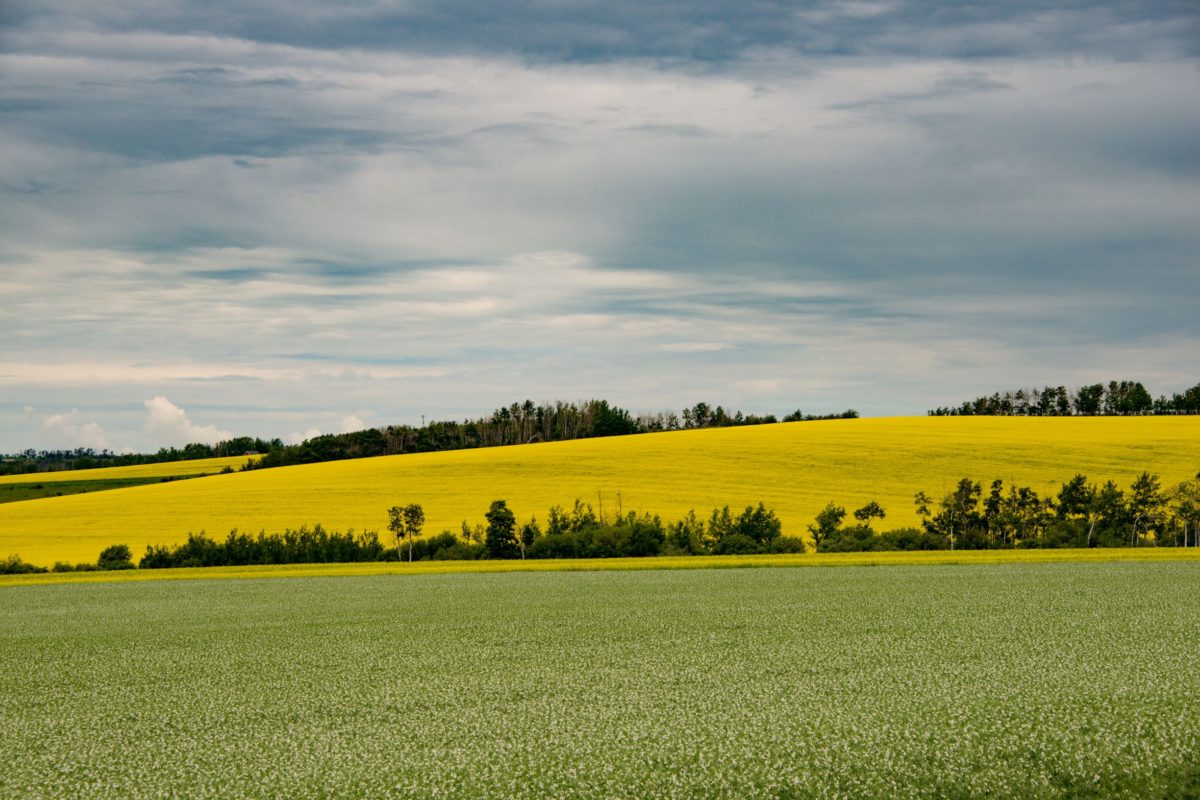April 24, 2020
By Jeremy Stroud, Analyst, Bonnefield Financial, Marcus Mitchell, Chief Investment Officer, Bonnefield Financial
The topic of climate change has never seemed more prevalent, with 2019 witnessing a continued trend of climate disasters. From wildfires in California, Brazil, and Australia, to droughts in Europe, and floods in the United States, these are only some of the negative impacts that climate change is having across the globe. Concern regarding climate change’s contribution to an increasing frequency of extreme weather events is reaching a crescendo in public discourse. Across multiple industries, geographies, and political affiliations, there exists a sense of urgency to develop solutions to this mounting global situation.
Against this backdrop, experts believe that the agricultural industry will play an important role in mitigating future carbon emissions. However, the sector’s specific role is far from clear. Not only is the sector directly affected by climate change, it has also been viewed as a contributor to climate change. Less widely discussed are the ways in which agriculture serves as a powerful tool to combat climate change.
Agriculture and Climate Change
Human contribution to climate change is well documented: processes such as fossil fuel combustion convert carbon, long stored in the earth, into greenhouse gases such as carbon dioxide (“CO2”) and methane. These gases accumulate in the atmosphere faster than can be sequestered, resulting in increasing atmospheric carbon and warming surface temperatures. These carbon molecules store energy and heat in the atmosphere, contributing to a warming trend over the past century which is projected to continue unless net emissions are drastically reduced.
While the mechanism is understood, policy makers and private interest group continue to search for viable solutions to both mitigate further emissions, and increase rates of carbon sequestration.
Mounting evidence suggests that farmland, and sustainable farming techniques, may present a significant opportunity to mitigate a portion of global greenhouse gas emissions in the future.(1)
With the adoption of modern and sustainable farming practices that encourage additional carbon storage through increasing soil organic matter (“SOM”) over time, farmers can play a part in reducing total emissions. The effects that modernizing agriculture have had in enhancing soil carbon storage capacity suggest significant improvements are still to come – both an important undertaking and a deeply encouraging thought.
Against this backdrop, a deeper understanding of sustainable farming techniques shows that farmland is immensely valuable, not only as a financial asset, but perhaps more importantly, due to the environmental and social value of agriculture.
The Current Greenhouse Gas Landscape
Temperatures throughout the world are increasing as greenhouse gases, such as carbon dioxide, linger in the atmosphere and trap heat around the earth’s surface. The implications of global warming are experienced ubiquitously: melting glaciers, rising sea levels, increased desertification and heightened levels of weather volatility. Surface temperatures are already 1°C higher than levels in the 1950s and are set to increase another 2.5°C in the next 40 years.(2) In Canada, three of the last five years have been the warmest on record, and each of the last 20 years have been warmer than the 20th century average.(3)
As atmospheric CO2 exceeded 415 parts per million (“ppm”) in 2019 (an event which marks the highest levels in history), countries were urged by the Intergovernmental Panel on Climate Change to not only lessen emissions but to reduce net atmospheric CO2 concentrations.(4) To date, much of the discussion has centered on means to slow greenhouse gas emissions. However, initiatives to sequester these emissions may also prove crucial in mitigating the worst effects of climate change.
As responsible investors consider how best to incorporate environmental, social, and governance (“ESG”) issues in their investment decisions, the concept of investing in carbon-offsetting assets has become a topic of interest. A growing field of evidence suggests that agriculture, and specifically the sustainable use of cropland, can serve as a meaningful tool to mitigate the effects of climate change.
How Sustainable Farming Can Sequester Carbon
Among the most accessible, practical, and effective methods to reduce atmospheric carbon is to store it in our soils and vegetation.(5) Photosynthesis, the essential process in agriculture, is a key mechanism for achieving carbon sequestration. Plant life, from root to stem, is comprised of carbon that was previously in our atmosphere. In addition to plant biomass, our soil also represents a major repository of carbon and will be an important interface for increasing future sequestration of atmospheric carbon.
Carbon sequestration achieved through adopting sustainable farming practices is directly connected to building SOM on our farms. Organic compounds are critical to the health of the soil biome: they act as a glue that connects the soil particles and increases carbon content, allowing the soil to maintain beneficial moisture levels and resist erosion.(6) With ecologically sustainable farming practices, such as reduced tillage and direct seeding, residues from crop roots, manure, and biomatter become part of the soil structure. Microbial activity breaks down these materials, releasing nutrients and carbon into the soil, which allows for organic matter to accumulate.

A Bonnefield parcel in Northern British Columbia’s Peace River region
Canada’s Role in Sequestering Carbon and Mitigating Climate Change
Canada benefits from an abundance of fertile land, fresh water, and natural resources. However, these resources require responsible management and sustainable use in order to protect them for the long term.
Over the past several decades in Canada, there have been substantial changes in both farming practices and soil carbon sequestration, resulting in positive outcomes. Regenerative farming methods, more efficient land use, and a change in crop composition have helped to shift the average acre of Canadian farmland from a net emitter of carbon to a net collector. Soils have gone from emitting 1.2 million tonnes of carbon in 1991 to removing about 11.9 million tonnes from the atmosphere in 2011.(7)
Table 1: Changes in Farming Practices That Can Lead to Greater Carbon Sequestration

Some Canadian farmers have benefited from a warming trend with longer growing seasons and the possibility of cultivating new crops. These changes can increase crop production and, subsequently, increase sequestration rates(8) assuming regular crop rotations, and increased crop residue left in the soil.(9)
It is worth noting that permanent crops, such as fruit orchards, vineyards, and berry bushes, have been shown to store significantly more carbon per area than row crops.(10) With an estimated 600,000 acres of permanent crops in Canada, the biomass of permanent crops, including orchards and vineyards, is estimated to sequester 5 million tonnes of carbon per year and release nearly 4 million tonnes of oxygen into the atmosphere.(11)
If sustainable practices continue, the Canadian Agri-Food Policy Institute suggests that Canadian cropland can maintain a sink of 17.8 million tonnes of carbon per year from 2016 to 2030.(12) While not a total solution, these are encouraging estimates that contribute towards a global effort to reduce net emissions.
Profitable and Sustainable Farming
Fortunately, there does not need to be a trade-off between sustainability and profitability in farming operations. Rather than being mutually exclusive, sustainable practices are critical to profitable farming. Productive soils and environmental health, in the long term, increase the cash flow potential of the land, whereas extractive agricultural practices can erode soils and destroy value. Resilient soils with less erosive risk also have greater SOM levels. Evidence shows that healthy SOM levels increase crop yields, increase water retention capacity, and reduce reliance on synthetic fertilizers.(13) One U.S. survey of corn yields suggested that fields with greater SOM concentrations averaged over 10 percent higher yields – simply put, building soil organic matter reaps material rewards.(14) Bonnefield believes that the trend toward agricultural sustainability in Canada is beneficial for the land, the atmosphere, and the farmer’s bottom line.
Bonnefield’s Role
As one of Canada’s largest farmland managers, Bonnefield believes that we have a responsibility to protect farmland for future generations, and to play our part in mitigating climate change. We are firmly committed to promoting sustainable farming practices that contribute to mitigating climate change while promoting prosperity for Canadian farmers. We invest in farmland for farming and have incorporated contractual ‘Standards of Care’ requirements into our farmland leases since the founding of the business. These ensure proper care for the land and a commitment to the long-term health of the soil. Preserving and enhancing soil quality is essential for the integrity of the land, success of the farmers that we work with, returns to our investors, and prosperity for the communities we serve.
Conclusion
According to the United Nations Environment Programme, net carbon emissions must be reduced by 55 percent annually to avoid the worst effects of climate change.(15) While there is no denying the enormity of this challenge, we believe that Canadian farmland can positively contribute to the solution by acting as a carbon sink. Increasing evidence indicates that sustainable agricultural practices can reduce the effects of climate change going forward and offer an accessible means to make an important difference in the future of our climate.(16)
As investors and policymakers alike consider the implications of their environmental decisions, farmland should be viewed not only as an attractive financial asset, but also a positive contributor to managing the impacts of climate change.
Sources:
1. The Canadian Agri-Food Policy Institute, 2019.
2. Grantham, 2018.
3. Climate Atlas of Canada, 2019.
4. Earth System Research Laboratory, 2019.
5. Mulligan et al. 2018.
6. Pucetaite et al. 2019.
7. Environment and Climate Change Canada, 2016
8. Intergovernmental Panel on Climate Change, 2018.
9. Statistics Canada, 2019
10. Huffman et al. 2015.
11. Lakso, 2010
12. Smukler, 2019.
13. Oldfield et al. 2019.
14. Oldfield et al. 2019.
15. United Nations: Emissions Gap Report, 2017
16. Smith et al. 2014.
About the Authors:
 Jeremy Stroud is an agricultural investment analyst with Bonnefield Financial based in Toronto, Canada. With a background in international food business, he offers insights on global agri-food and water investments, value chain analysis and economic systems. He has volunteered and worked with a spectrum of primary and vertically integrated agricultural groups in North and South America, Europe and Africa.
Jeremy Stroud is an agricultural investment analyst with Bonnefield Financial based in Toronto, Canada. With a background in international food business, he offers insights on global agri-food and water investments, value chain analysis and economic systems. He has volunteered and worked with a spectrum of primary and vertically integrated agricultural groups in North and South America, Europe and Africa.
 Marcus Mitchell serves as Chief Investment Officer at Bonnefield Financial based in Toronto, Canada. Through his research and practice Marcus has played a key role in advancing Bonnefield’s understanding of the drivers of performance in agricultural investments, and building Bonnefield’s investment practice to reflect the organization’s core principles and investment philosophy.
Marcus Mitchell serves as Chief Investment Officer at Bonnefield Financial based in Toronto, Canada. Through his research and practice Marcus has played a key role in advancing Bonnefield’s understanding of the drivers of performance in agricultural investments, and building Bonnefield’s investment practice to reflect the organization’s core principles and investment philosophy.

Let GAI News inform your engagement in the agriculture sector.
GAI News provides crucial and timely news and insight to help you stay ahead of critical agricultural trends through free delivery of two weekly newsletters, Ag Investing Weekly and AgTech Intel.




